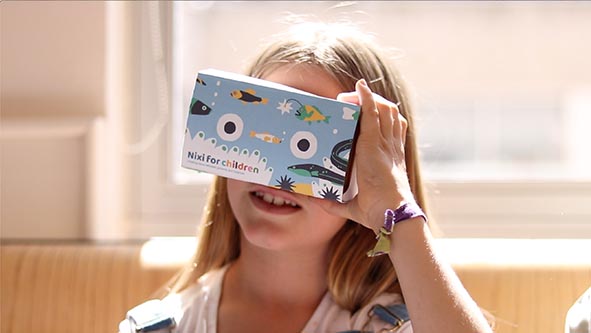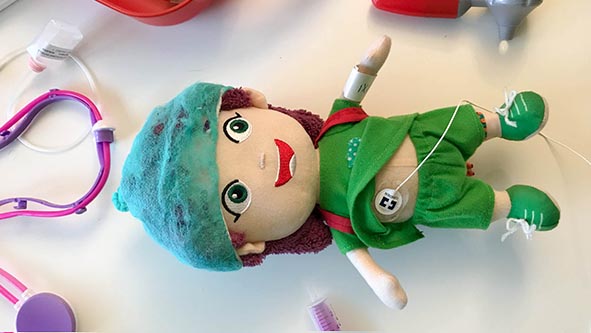The 5 senses rule
by Verena del Valle
I highly recommend using a neutral doll (one that the child is not attached to) for younger children to explain and show the things that will happen on surgery day.
For example, when preparing for induction to anesthesia, tell the doll “Dear doll, you know we care a lot about you and we want you to heal as quick as possible. There is a medicine that helps us stay asleep during surgery, it’s called “anesthesia”. Look doll, here I have a “compresse”, you can touch it, it’s soft. Now I’m going to wet it… you see, it is cold now. Now I will clean your arm – you see – it’s cold. Now your job is going to be to hold very still and blow like when you blow candles of a birthday cake (This gives him a task!). Like this if you feel some “bobo”, we can blow it away! Mom’s job will be to help you hold very still. Everyone has a big job. Great job doll, what band aid do you want, this one or the other one?” When your child will get the vaccination himself, let him choose the band aid ahead of time and hold it during the vaccination.
Tip: If the child is not listening to our explanation, it is also very useful ignoring him and talking just to the doll. This will most certainly catch the child´s attention.
“I highly recommend using a neutral doll for younger children to explain and show the things that will happen on surgery day”

Verena del Valle
Psicóloga certificada Child Life
Mom but also certified Child Life specialist. Verena is a trained professional with expertise in helping children and their families overcome life’s most challenging events, particularly those related to healthcare and hospitalization.





